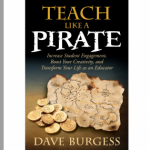 This past fall, I have truly embraced the power of Twitter as a form of self-directed, job-embedded professional learning. It was back in 2008 when I first created my account. My first tweet was “Smile…. Enjoying the first day of 2008”. I had no idea who I was sending it to as I didn’t understand the concept of “following” or “followers”. My account sat dormant for the next 3 years. In the fall of 2011, in an effort to explore another method of engaging our parent community, we created a school account and added the Feed to our school website. I used the school account daily to send out messages about upcoming Parent Council meetings, exciting learning activities which were happening, school events and welcoming messages ~ one way communication!
This past fall, I have truly embraced the power of Twitter as a form of self-directed, job-embedded professional learning. It was back in 2008 when I first created my account. My first tweet was “Smile…. Enjoying the first day of 2008”. I had no idea who I was sending it to as I didn’t understand the concept of “following” or “followers”. My account sat dormant for the next 3 years. In the fall of 2011, in an effort to explore another method of engaging our parent community, we created a school account and added the Feed to our school website. I used the school account daily to send out messages about upcoming Parent Council meetings, exciting learning activities which were happening, school events and welcoming messages ~ one way communication!
Within a few months, I returned to my personal account and started to “lurk” and follow a few others. I can recall the excitement of the first time someone “retweeted” a comment, or favourited something I had tweeted. There is such a feeling of validation when another educator publically shares that they agree with something you’ve said.
Within months, my irregular visits to Twitter became a daily part of my professional life. I would start my day reading articles, blogs and comments and then retweet those that had an impact on me or might assist a colleague.
During the March Break, I had my first Twitter conversation with Dave Burgess (Teach like a Pirate) which resulted in him coming to our school for a professional learning experience which helped in transforming how many of staff reflected on their practice. I then started to see how Twitter could become more than one way communication. It could become a conversation and hence, a wonderful window into deep professional learning.
Within the last few months, I’ve had the opportunity to meet some of my international Twitter “peeps” in person and I’ve pushed myself to not just retweet but to comment on the articles and engage in online conversations. There is such a tremendous amount of information available to use. But just as we tell our students, we need to be able to critically analyze the information that is coming at us at exponential speeds.
Last month, we started a Twitter Challenge within our school board. We have over 80 educators who are excited about exploring this form of social media to enhance their professional learning. Some of our participants are brand new and others are seasoned users who are assisting as mentors. We are thrilled with the level of professional dialogue, the exchange of information, the sharing of pictures of student learning and the amount of reflection that is occurring and being documented through this process.
Within my career, I cannot recall a time when I had more access to the latest research, such a broad professional learning network, daily opportunities to challenge my thinking or more intellectual connections to my colleagues.
Are you using Twitter to enhance your professional learning?
Come Write with me…..

